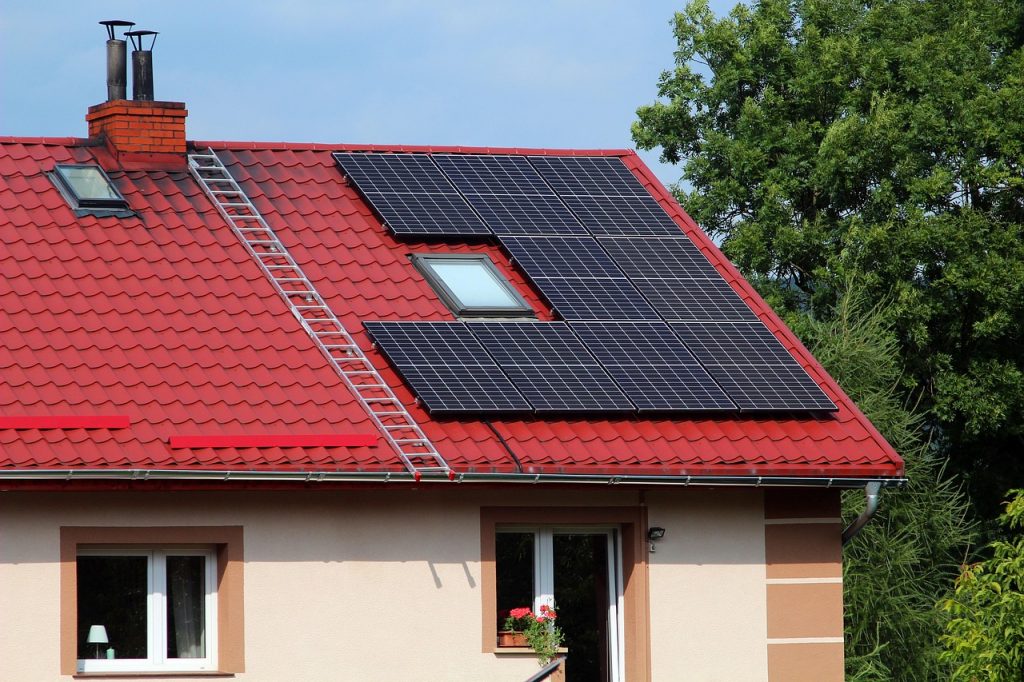
Photovoltaic (PV) energy represents one of the most promising and scalable forms of renewable energy in the global transition toward carbon neutrality. By converting sunlight directly into electricity, PV systems offer a clean, sustainable, and increasingly cost-effective alternative to fossil fuel-based power generation. This article provides an overview of how PV energy is produced, its economic advantages, and a method for estimating its generation potential based on geographical and physical parameters.
How Photovoltaic Energy is Produced
At the core of PV technology are solar panels composed of semiconductor materials, typically silicon, which exhibit the photovoltaic effect: the ability to generate an electric current when exposed to sunlight. When solar radiation strikes the PV cells, it dislodges electrons within the semiconductor, generating direct current (DC) electricity. This current is then converted to alternating current (AC) via an inverter, making it usable for homes, businesses, or feeding into the electrical grid.
Photovoltaic systems can be installed at various scales—ranging from small residential rooftop systems to utility-scale solar farms—and can operate in both grid-connected and off-grid configurations.
Cost Benefits of PV Energy
The cost competitiveness of PV energy has improved dramatically in the past two decades. Key advantages include:
- Low Operating Costs: Once installed, PV systems require minimal maintenance and no fuel input, resulting in very low operational expenditures.
- Scalability and Modularity: Systems can be tailored to match demand, reducing the need for overcapacity.
- Long-Term Savings: Though initial installation costs remain a consideration, decreasing prices of solar modules and supportive incentives (such as tax credits, feed-in tariffs, or net metering) enhance return on investment (ROI).
- Energy Independence: Residential and commercial users can reduce dependency on external power providers, offering protection from price volatility.
Levelized cost of electricity (LCOE) for PV has reached or even fallen below grid parity in many regions, meaning it is now equal to or cheaper than conventional electricity prices.
Estimating Solar Power Generation
The potential electricity output of a photovoltaic system depends on several factors, including geographic location, panel efficiency, and available surface area. A simplified calculation can be used to estimate the expected energy yield:
PV Power Generation Formula
\[
\begin{align*}
\text{Daily Output (kWh)} \ = \
& \text{Rooftop Area (m²)} \ \times \\
& \text{Panel Efficiency} \ \times \\
& \text{GHI (kWh/m²/day)}
\end{align*}
\]
Where:
- Rooftop Area (m²): Available space for installing panels
- Panel Efficiency: Percentage (e.g., 0.20 for 20%) indicating how effectively the panel converts sunlight into electricity
- GHI (Global Horizontal Irradiance): Average daily solar radiation at the location, measured in kWh/m²/day
Alternatively, using average daily sun hours and system size:
\[
\begin{align*}
\text{Daily Output (kWh)} \ = \
& \text{System Size (kW)} \ \times \\
& \text{Average Sun Hours (hours/day)} \\
\end{align*}
\]
Example Calculation
Assume:
- Rooftop Area = 50 m²
- Panel Efficiency = 20% (0.20)
- GHI = 5.0 kWh/m²/day
Then:
\[
\begin{align*}
\text{Annual Output} \
& = \ 50 \times 0.20 \times 5.0 \times 365 \\
& = \ 18,250 \ \text{kWh/year}\\
\end{align*}
\]
This value can be compared to household or business consumption to determine system sizing or financial feasibility.
Conclusion
Photovoltaic energy continues to gain traction as a cornerstone of the renewable energy landscape. It offers a clean and economical solution to the global energy challenge, particularly when supported by well-designed policy frameworks and technological innovation. With its modularity, declining costs, and predictable generation profile, PV systems are not only environmentally sound but also economically compelling for a wide range of users.
For stakeholders in energy planning, construction, real estate, or sustainability initiatives, understanding the fundamentals and potential of photovoltaic energy is essential for strategic decision-making.